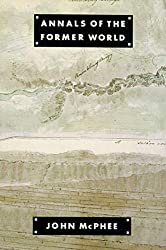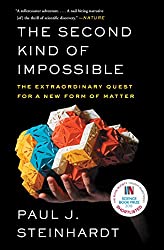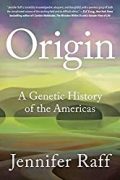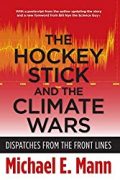
Rating: 8.2/10.
One of the longer books I’ve read, this is a 660-page book about geology. It is actually composed of five books that were separately published from 1981 to 1998. It won the 1999 Pulitzer Prize for non-fiction. The author has a narrative style that takes a while to get used to: at first I thought he was excessively rambly, but after a while I found it charming. In each book, the author focuses on a separate region of the United States and travels for a while with a geologist specializing in the area. He interleaves three stories: (1) the geological story of how the region came to be that way, (2) how this knowledge was discovered by scientists, and (3) the personal story of the expert geologist that the author works with and their upbringing and experiences.
Book 1 focuses on Nevada with professor Kenneth Deffeyes, who likes to travel on highways and look at roadcuts for geologic information. This chapter introduces us to geologic timescales, and how we first came to realize that the Earth is not static, and that the continents are actually moving. What’s happening in Nevada is similar to how South America and Africa split apart: a rift valley is starting to form, and eventually California will secede from the mainland and become an island.
Book 2 is about the Eastern United States, which has two major geologic factors. First is the Appalachian mountains, a very old mountain range that was created in the Silurian when the African plate collided with the North American plate and closed the Iapetus Sea. Back then, the midwestern US was under a shallow sea. Afterwards, Africa drifted apart and the Appalachians got eroded so it is much shorter now. The second geologic factor is more recent: during the ice ages, glaciers covered much of North America. This carved out the Great Lakes and deposited minerals (including diamonds) hundreds of miles away. The geologist in this chapter is Anita Harris from New York; she is a critic of the continental drift theory which was still being debated at the time. Evidence for continental drift is often subtle like the presence of fossils in an unexpected place, and Anita likes to propose alternative theories to explain the evidence.
Book 3 focuses on Wyoming, one of the most geologically diverse states. Its most notable geological feature is Yellowstone National Park, sitting on top of a hotspot. Hotspots are high temperature spots in the mantle, and stay static as continental plates move over them — this explains the Hawaiian island chain. The Teton Range was only recently raised upwards, so it contains a cross-section of geologic time without much erosion. The geologist this chapter is David Love; his father was a Scotsman who moved to Wyoming in 1905 to work as a cowboy when it was still the wild west. Love grew up to be a renowned geologist specializing in the geology of Wyoming.
Book 4 is about California: a lot of the Sierra mountains are made of ophiolites, which are pieces of oceanic crust pushed onto land. Ophiolites are common when an oceanic plate collides with a continental plate, and they appear in the Himalayas too. They are often rich in metals, drawing many people to California during the 1848 gold rush (similar geology created copper deposits in Cyprus). The geologist in this chapter, Eldridge Moores, grew up in a mining town in the California mountains, but his story is not emphasized as much here. California is also prone to earthquakes, the most recent ones being in 1906 and 1989. The San Andreas fault is one of a group of transverse faults running through California, since the two plates are sliding past each other. There is constantly tension between the plates which is suddenly released during earthquakes, but it’s impossible to predict precisely when an earthquake will happen. A lot of human settlements are built on top of this fault zone, although we’ve gotten better at making our buildings more earthquake-resistant.
Book 5 is about the Canadian Shield, which was created soon after the first continents formed and remained relatively stable thereafter. This book is a lot shorter than the rest, as not much is known about this time period. The difficulty is that Precambrian rocks have no fossil record, and fossils are usually what geologists use to differentiate between strata of rock. Recent innovations in isotope dating has allowed us some knowledge into this distant past, and so far the oldest terrestrial rock was found in the Canadian arctic, near Great Bear Lake.
Overall, an impressive work, especially as the author isn’t even a professional geologist. Geology is a challenging science because we only get to observe a thin slice of the earth’s crust and the present-day state of the rocks, and we must infer what’s happening deep beneath the surface and millions of years back in time, through indirect evidence. The knowledge is mostly irrelevant to ordinary human lives, except for extracting natural resources like petroleum and metal ores. This book conveys to a lay audience geologists’ thought processes and techniques, although with a preference for fieldwork over digital modelling and remote sensing. One thing I disliked was the author likes to describe geological formations entirely using words with very few visual aids, so you have to look elsewhere for maps and figures to follow what’s going on. The later books are a lot better though: there is only a single map / figure in Book 1, but more than 10 in Book 4.



